Mineral Identification Lab
Image
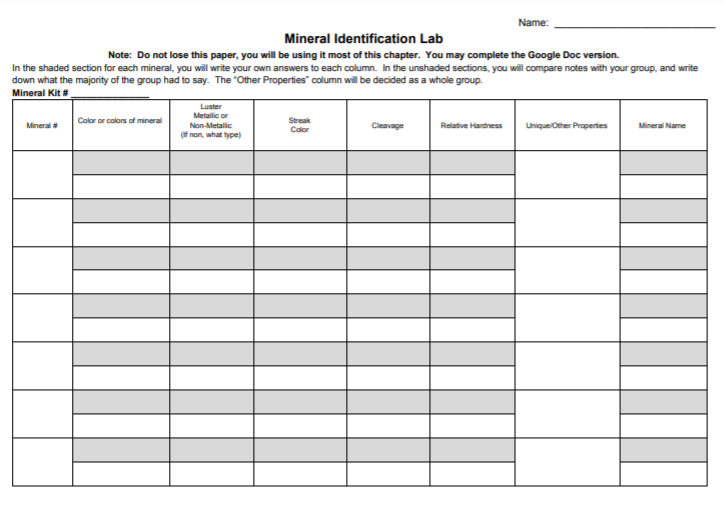
In this 4 day lab, students will become very familiar with the procedures involved in identifying minerals.
Day 1: Students will learn what streak, cleavage, and luster are.

In this 4 day lab, students will become very familiar with the procedures involved in identifying minerals.
Day 1: Students will learn what streak, cleavage, and luster are.

This image was designed to demonstrate how sandstone ends up as gneiss, a metamorphic rock. It follows the sequences of: sandstone, quartzite, shale, slate, phylite, schist, and gneiss.
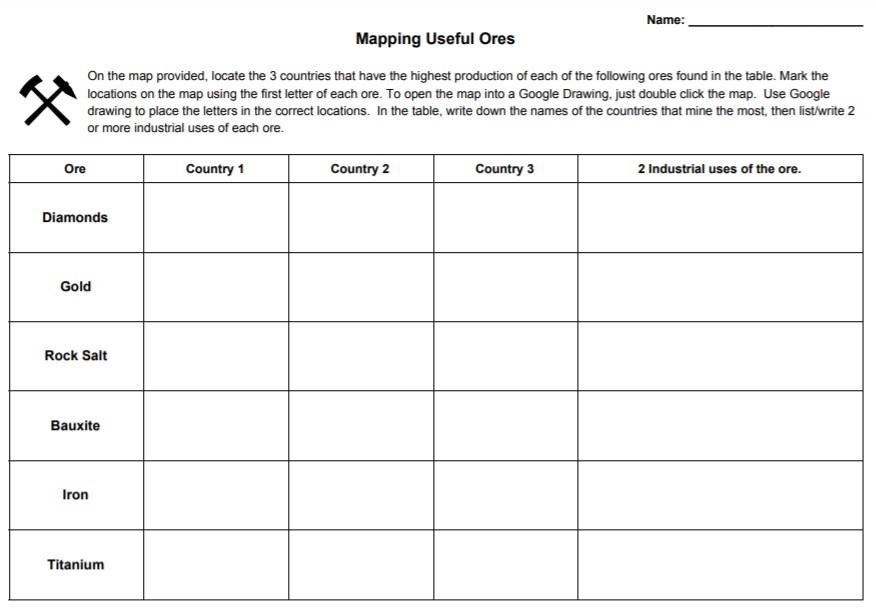
In this assignment, students will open up a Google Doc, you can have it printed as well, and fill out a table of some very useful industrial ores. The ores that will be researched are diamonds, gold, rock salt, bauxite, iron, and titanium. Students will research which 3 countries in the world are the top producers of each ore. They will then find and write 2 or more industrial uses for each ore. As they are doing their research, students will also use a map and mark where these countries are. This is great to reinforce the geography standards.
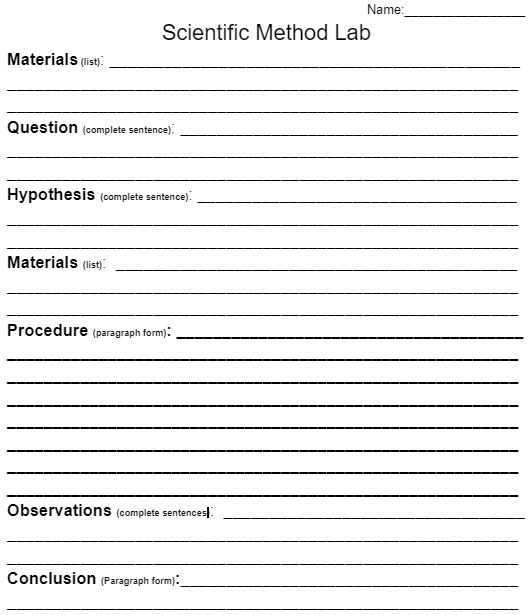
This is a scientific method lab sheet geared to merge a science experiment with grammar by using complete sentences.
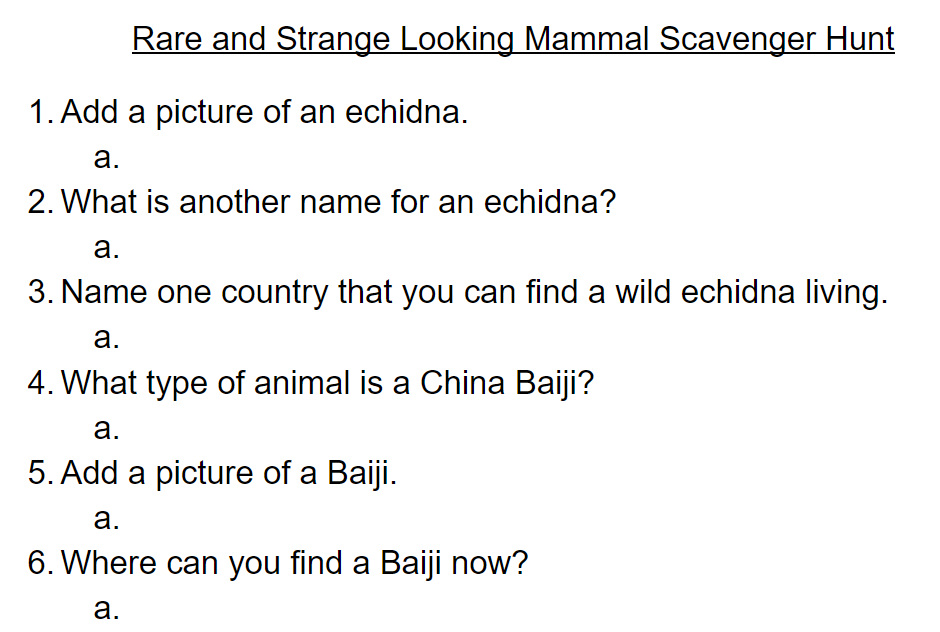
Students will have fun researching 5 unique mammals that are funny-looking and just plain strange. Students will discover some interesting facts about each one, learn how to copy and paste a picture into a Google doc document, and some of the mammals' locations.
The mammals are the Javan Rhino, the Cuban Solenodon, the Pygmy Possum, the China Baiji, and the Echidna.

Using colored pencils or crayons, students will read some Christmas puns and then identify nouns, verbs, pronouns, Adverbs, and Adjectives with different colors.
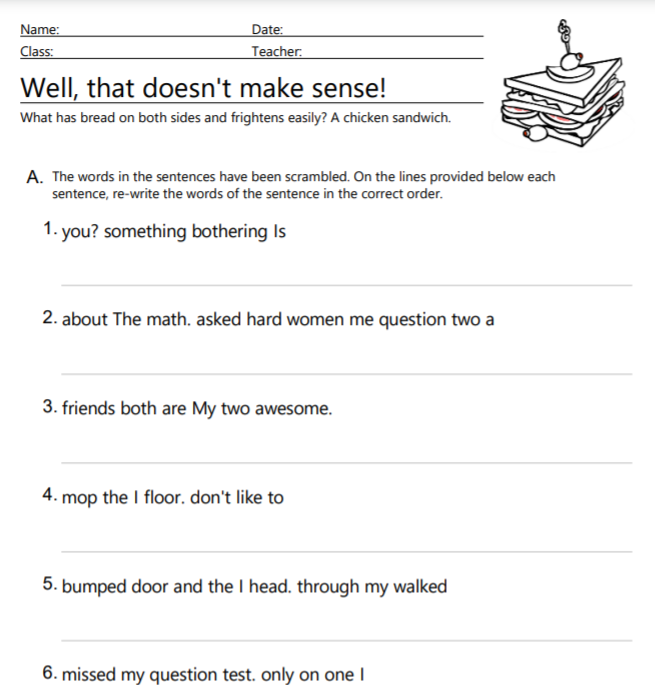
Students will find this grammar activity and worksheet fun as they try to put the words in the correct order to make a sentence.

In this compare and contrast activity, students will read two articles or two books, or watch two short Youtube videos about two animals. Students will then compare and contrast the two animals, finding differences and similarities. This is a great assignment to bring science and biology into the reading classroom.
I use either Youtube videos or short books found on GetEpic. (GetEpic is a free reading program with thousands of free, fully colored books.)
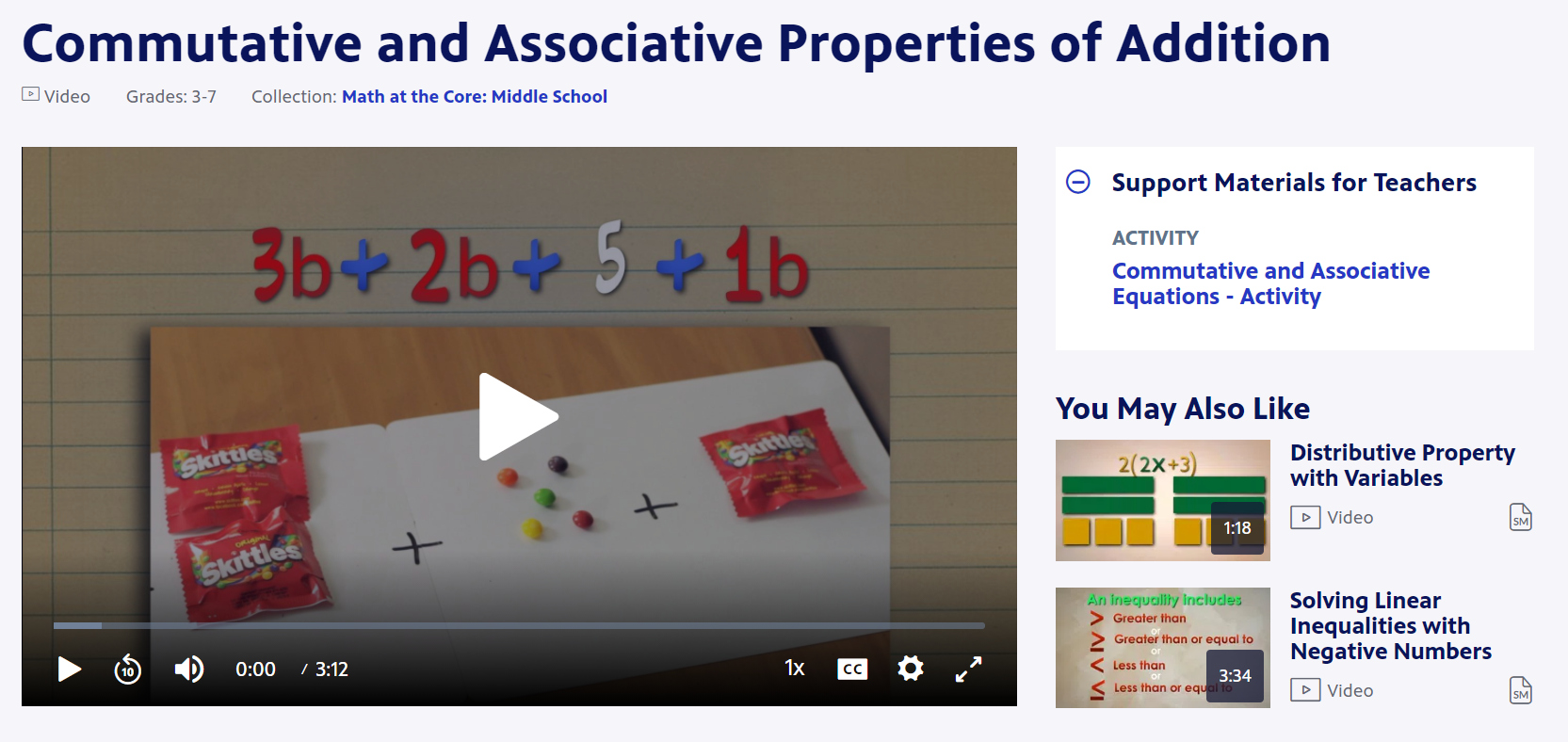
This website gives a great example of using the commutative and associative properties of addition using Skittles. There is a video available that will help demonstrate successful implementation.
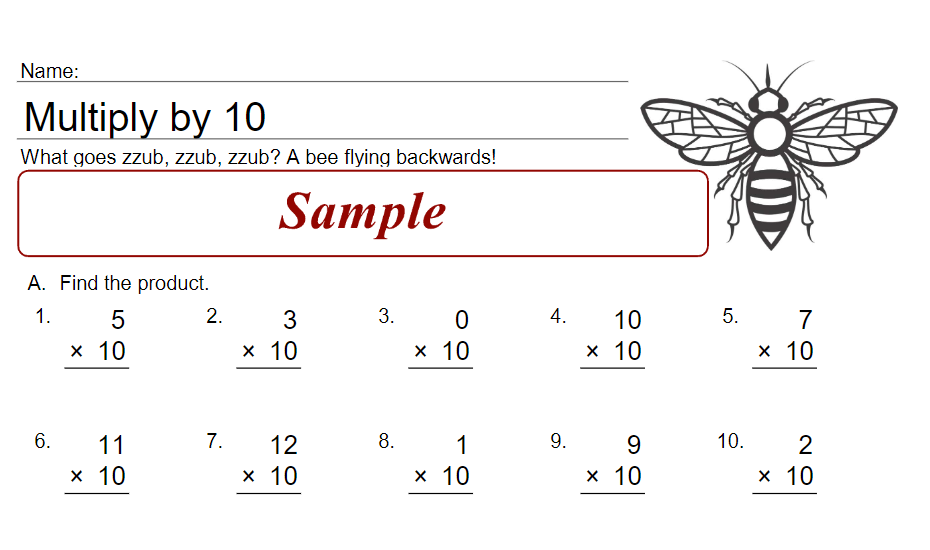
This product gives plenty of practice to elementary students who are working at memorizing their multiplication times tables.